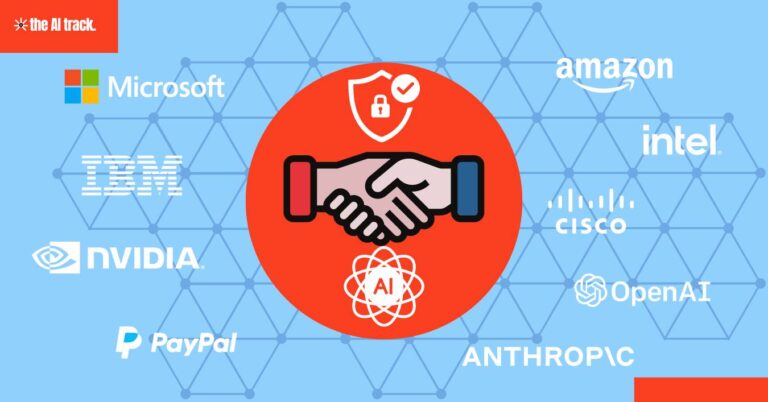Jump to Sections
GPT-4 and AGI: Navigating AI Experts’ Perspectives on Evolution
The emergence of GPT-4 has set the AI community ablaze with discussions that traverse its capabilities and implications. A recent compilation by IEEE Spectrum, capturing the perspectives of 22 AI luminaries, delves into the multifaceted realm of GPT-4’s potential and its implications for the journey toward Artificial General Intelligence (AGI) (read definition here).

Diverse Opinions in the AI Community:
The reception of GPT-4 within the AI landscape is far from uniform. While some hail it as a significant leap toward AGI, others regard it as yet another incremental advancement along a much longer continuum.
A report from Nature underscores how GPT-4 has showcased capabilities that were once envisioned for a distant future, igniting further debate and inquiry. GPT-4 has limitations, such as being prone to reasoning errors and biases, and making up false information. It is not fully reliable and requires great care when using language model outputs, particularly in high-stakes contexts.
While GPT-4 has demonstrated more creativity, more advanced reasoning, stronger performance across multiple languages, the ability to accept visual input, and the capacity to handle significantly more text than its predecessors, it still lacks the cognitive flexibility and breadth of capabilities associated with AGI.
The potential for GPT-4 to disrupt employment, particularly in fields like content creation and customer support, looms large. A study highlighted by MIT Technology Review raises alarms about the amplification of biases and generation of propaganda by generative AI models, which could have deep societal repercussions.
Does GPT-4 Inch Us Closer to AGI? The Debate Rages On
The introduction of chatbot GPT-4 has reignited the debate around artificial general intelligence (AGI) and whether we are nearing this long-sought goal. GPT-4’s remarkably human-like conversational abilities have prompted some experts to view the model as a stepping stone toward AGI. However, others argue true human-level intelligence remains a distant prospect.
On the optimistic side, GPT-4 exhibits an unprecedented mastery of natural language and common sense that was unthinkable just a few years ago. Its ability to answer follow-up questions and admit ignorance could indicate the beginnings of reasoning and comprehension. Some believe capabilities like these bring the dream of well-rounded, general artificial intelligence closer to reality.
But skeptics point to the long history of inflated expectations around AGI that have not come to fruition. The pioneers of AI in the 1950s also believed human-like AI was imminent. Yet 70 years later, we are still far from machines that can match the flexibility and learning potential of human cognition. While remarkable in its domain, GPT-4 has glaring weaknesses outside of text generation that underscore how far we are from AGI.
This back-and-forth debate echoes larger disagreements around the future of AI. But the discourse brings welcome attention to key challenges like achieving robust common sense, efficient learning algorithms, and ways to measure progress rigorously. Even if AGI remains distant, addressing such problems will expand AI’s current potential. GPT-4 may or may not bring us measurably closer to AGI, but acting as though the finish line could be near can accelerate discoveries.
Tackling the Risks Ahead:
The prospect of GPT-4 being exploited to disseminate misinformation raises significant concerns. This powerful language model could be used to generate highly realistic but false news articles, social media posts, and other forms of content that are indistinguishable from the real thing. Such content could be used to manipulate public opinion, sow discord, and undermine trust in institutions.
Initiatives undertaken by platforms like OpenAI are actively engaged in implementing safety measures to mitigate these potential risks. For example, OpenAI has developed a system called “Detecting Misinformation from GPT-4” (DM-GPT-4) that can identify text generated by GPT-4 with a high degree of accuracy. DM-GPT-4 could be used to flag potential misinformation before it is disseminated to the public.
However, it is clear that technological solutions alone will not be enough to address the risks posed by GPT-4 and other large language models. The imperative for collaborative efforts among AI developers, policymakers, and ethicists cannot be overstated in ensuring the responsible development and deployment of AI.
Broad Societal Implications:
The ascendancy of GPT-4 and similar models carries the potential to reshape industries ranging from content creation to customer service. Their remarkable capacity to generate human-like text at scale could catalyze substantial economic shifts.
For example, GPT-4 could be used to generate personalized marketing content, write product descriptions, and even create original works of fiction and poetry. This could lead to new job opportunities and the creation of entirely new industries.
However, it is important to note that the potential benefits of GPT-4 and other large language models are also accompanied by potential risks. For example, the widespread use of AI-generated text could lead to job displacement, as machines become capable of performing tasks that are currently done by humans. Additionally, the rise of “deepfakes” and other forms of synthetic media could pose a threat to privacy and security.
It is therefore essential that we develop robust ethical frameworks to guide the development and deployment of GPT-4 and other large language models. These frameworks must take into account the potential risks and benefits of these technologies, as well as the values that we want to uphold in our society.
Paving the Way Forward:
The introduction of GPT-4 serves as a catalyst for the development of even more advanced language models. The AI community is fervently engaged in discussions about the roadmap to AGI and the essential milestones on this journey. A study by Harvard Business Review suggests that while AGI may remain a distant horizon, the strides in AI are laying the groundwork for more sophisticated models capable of a broader array of tasks.
GPT-4’s impressive capabilities have sparked a renewed sense of optimism about the potential of AI to revolutionize many aspects of our lives. From healthcare to education to customer service, GPT-4 and other large language models could usher in a new era of innovation and productivity.
However, it is important to note that the development of AGI is a complex and challenging undertaking. There are many technical hurdles that need to be overcome before we can create truly intelligent machines. One of the biggest challenges is developing AI systems that can learn and adapt to new information and environments in the same way that humans do.
Another challenge is ensuring that AI systems are aligned with human values and interests. We need to develop mechanisms to prevent AI systems from being used for malicious purposes or in ways that harm individuals or society.
Despite the challenges, the progress that has been made in AI in recent years is truly remarkable. GPT-4 and other large language models represent a significant milestone on the journey to AGI. By working together, the AI community can continue to push the boundaries of what is possible and create a future where AI is used to benefit all of humanity.
The advent of GPT-4 rekindles the debate surrounding the trajectory of AI evolution and its societal implications. While the pathway to AGI is shrouded in uncertainty, the imperative for a balanced approach — one that embraces both the opportunities and challenges brought about by these technological advancements — becomes undeniable.
Key Takeaway
The emergence of GPT-4 has reignited the debate on the trajectory of AI development and its societal implications. While the journey to AGI remains uncertain, what’s clear is the need for a balanced approach, considering both the opportunities and challenges posed by such advancements.






